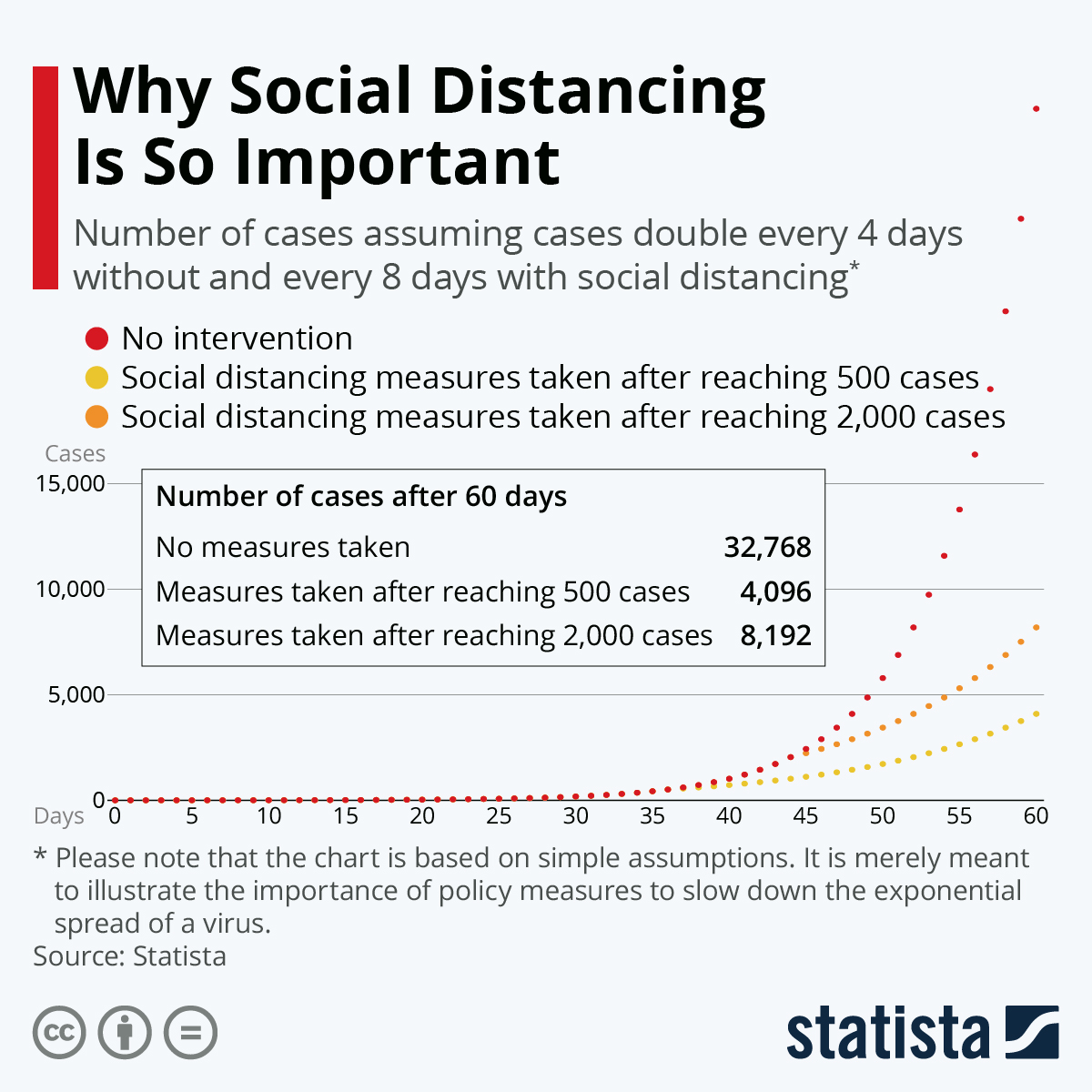If you are a fan of the horror genre the included infographic, depicting the sudden and precipitous drop in restaurant sales, is right up your alley. For everyone else it is the thing of nightmares.
 You will find more infographics at Statista
You will find more infographics at StatistaClearly, no one was prepared for a pandemic. While many of you have responded quite well to the challenges, it does nothing to mitigate the wild uncertainty that is pervading the planet. In times like this, we are tempted to make analogies to other tough times we have endured. The most recent and closest analogy would be the events 9/11, but is it even relevant?
How the Restaurant Industry Weathered 9/11
I was in San Mateo, CA on September 11, 2001 when the first plane struck the World Trade Center in lower-Manhattan. I had acquaintances in that building, but no one close to me. It felt as if the world was standing still. It was a sudden action that changed the course of normal life for everyone in the US and folks across the world.
The restaurant I operated was a 23k square foot sports bar with 80 TVs, five private rooms, and a dining area that seated over 300. This was pre-smartphone days and my sports bar with 80 TVs became the place to be for anyone that wanted to see the news and get a bite. I also vividly remember expediting the busiest lunch in our history with tears streaming down my face.
Business took a serious hit, though. People were afraid to go out and so they stayed home. That meant less traffic into our seats and other restaurants. We had to ask our landlord for an extension on our rent and we called our investors for capital to keep the restaurant operating.
Life returned to normal, but it sure did take a bit. Guests mostly returned in large part because the Feds wrote everyone a check and encouraged them to spend it at a restaurant or in retail. Jumpstart the economy by giving people some cash to spend.
This created a small stimulus, but it mostly reminded people they could get back to parts of their lives as normal. Of course, travel experience inexorable change from 9/11, but even that returned to a new normal as the country sustained consistent growth until the next economic downturn in 2008.
What About Restaurants & Coronavirus?
I wish I could say that this situation was similar enough to the 9/11 disruption pattern, but it just isn’t so.
What we can learn from that recovery is that people will be slow to shed their fear. Then it was about terrorism, a seen enemy with whom we went to war after the attack. In today’s crisis, the uncertainty comes from a disease no one can see, or even detect in its earliest stages of development. This means that even when people are freed from their homes they will remain reticent to go out.
This will be especially true if the “shelter in place” approach continues for many weeks (or several months) as their financial uncertainty grows. People with no money or prospects for earning won’t likely be showering your restaurants with their discretionary spending.
However, that isn’t to say we are advocating for a return to regular order as early as this Easter (April 12th). Dead bodies aren’t exactly great for the economy either.
Drastic Actions Now or Pay For It Later
 You will find more infographics at Statista
You will find more infographics at StatistaIf we don’t beat this disease back sufficiently, we will just see it resurge next flu season. Or worse, it will just continue unabated until we see massive deaths and the complete implosion of our entire economic system and culture.
Those may sound like hyperbolic predictions, but you need only look at the Spanish Flu epidemic in 1918 for some instruction.
Because they had no way of dealing with influenza, beyond enduring its affects, the disease devastated the world’s population over two full winter seasons. It finally petered out because enough of the population had experienced it and built an immunity that it no longer spread effectively.
We are currently practicing a similar form of social distancing as was done in St. Louis during the 1918 flu pandemic. They saw the flattened curve everyone is so fond of hoping for these days.
If we follow the same path as other countries that were infected earlier, we can see that the curve should flatten in about 90 days. If we count back from March 17, when the bulk of the closure orders were set, then we can look at the curve in late-May or early-June to determine whether it’s safe to go outside again.
We will also know by then how countries that have relaxed contact rules are faring, which will help us better understand our options. That may sound scary, but if we are to beat this, we are of the opinion we have to follow the insights of science and medical professionals that manage this daily. We encourage you to listen to your local authorities first, but also consider the direction the CDC has provided on protecting your team, guests, and yourself.
It would be a disaster to rush back to your prior life only to find it was cancelled again because the virus took hold again. We know the devastation this is causing, because we are living it right alongside you. But we also believe that waiting to be sure we can return to social interaction is the only sane choice for an industry that would be destroyed not just devastated by this outbreak.








![State of the Restaurant Industry 2021: Post-COVID Edition [INFOGRAPHIC]](https://images.squarespace-cdn.com/content/v1/56a2785c69a91af45e06a188/1624456093617-7MNR7QR90WNFTYRI8W5D/State+of+the+Restaurant+Industry.png)



